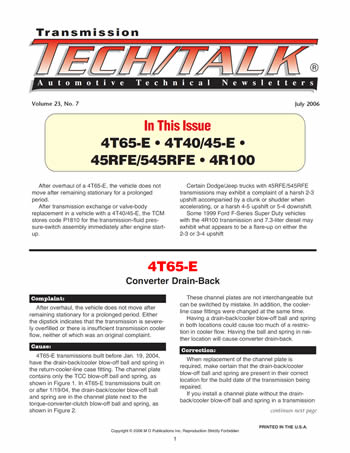Subaru 4AT Phase 2
One of the more-frequently asked questions in calls ATSG receives regarding the Subaru 4AT Phase 2 transmission is, “Where do the leaf springs go for the 2/4-clutch and low/reverse-clutch-pack stack-up?” Figures 1 and 2 show the position and configuration for the 2/4 pack, and figures 3 and 4 show the low/reverse pack.
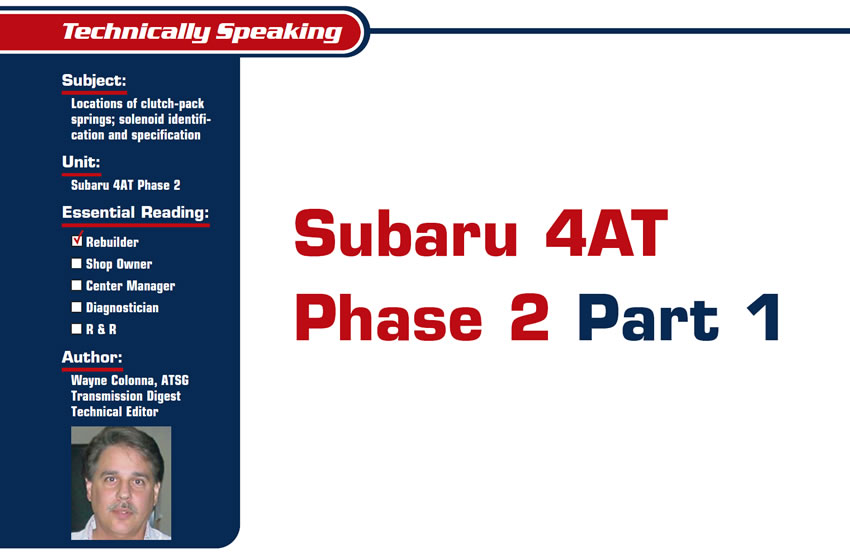
They Don’t Listen
What do lots of owners whose small businesses get into trouble have in common? They don’t listen. Maybe they don’t even ask, but the fact remains that they have major difficulties because they assume they know what their customers want and need. Finding out could save the lives of their businesses and allow them to prosper. Their lack of listening skills also gets them into trouble when they’re trying to handle customer-relations issues. We’ll look at both problems.
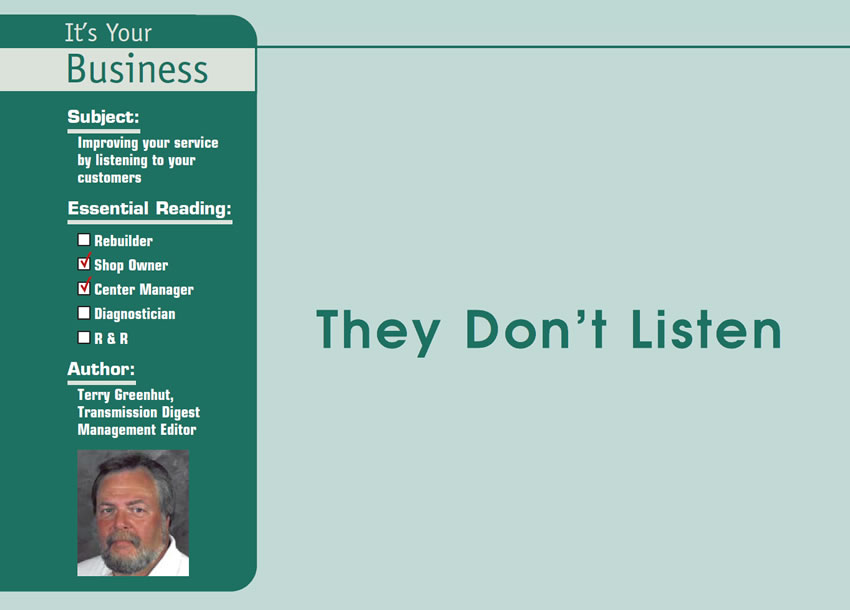
A Different Fix for an Old Problem
The problem of bore wear on torque-converter-clutch pistons has been around since lockup torque converters were born. The rotational restriction on the pistons is handled by splines, pins or fingers. But centering the pistons is generally the sole responsibility of the bore. Any out-of-balance movement of the piston will cause the piston bore to scuff against the turbine hub when it moves to apply or release the clutch. Indexing the piston to the turbine and balancing this unit helps minimize bore wear. (See the article on indexing TCC-piston damper assemblies to turbines, Transmission Digest, March 2006.)

Building a Reaming & Inspection Station
As valve bodies continue to evolve and become more complex, rebuilders are finding it increasingly necessary to have a central location for bench reaming and inspection of valve bodies. Many transmission shops have found – to their surprise – that building an inspection and reaming station can be inexpensive and that a station can be put together from many items already available in the shop.

45RFE: Mystery Code 1781
This is another one of those frustrating and mind-boggling codes that you do everything to try to get rid of but it seems to always come back. The worst part about this code is that it will not appear when the vehicle is in your shop. Unfortunately, the code is intermittent and its frequency is erratic.
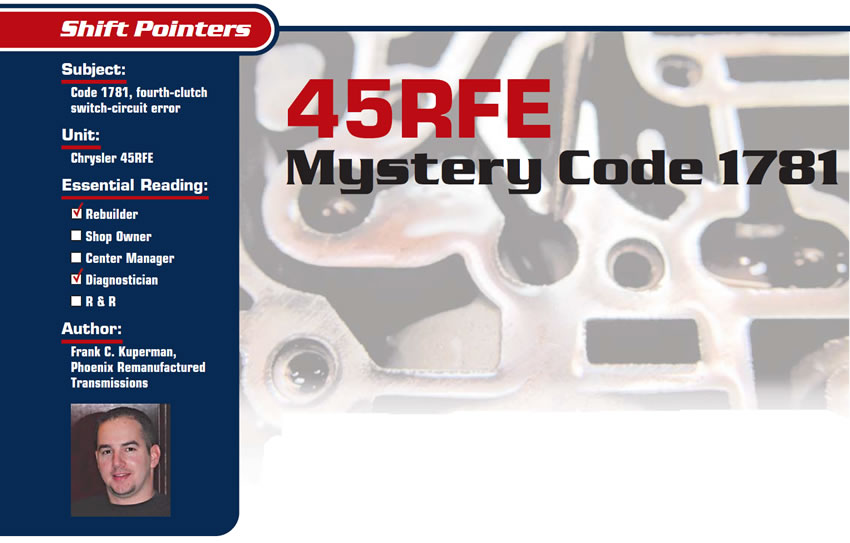
How Things Work: Four-Wheel-Drive Systems
The transfer case is a very simple concept. It is basically a power divider mounted on a transmission that is capable of splitting torque produced by the engine to drive both sets of axles on the vehicle.
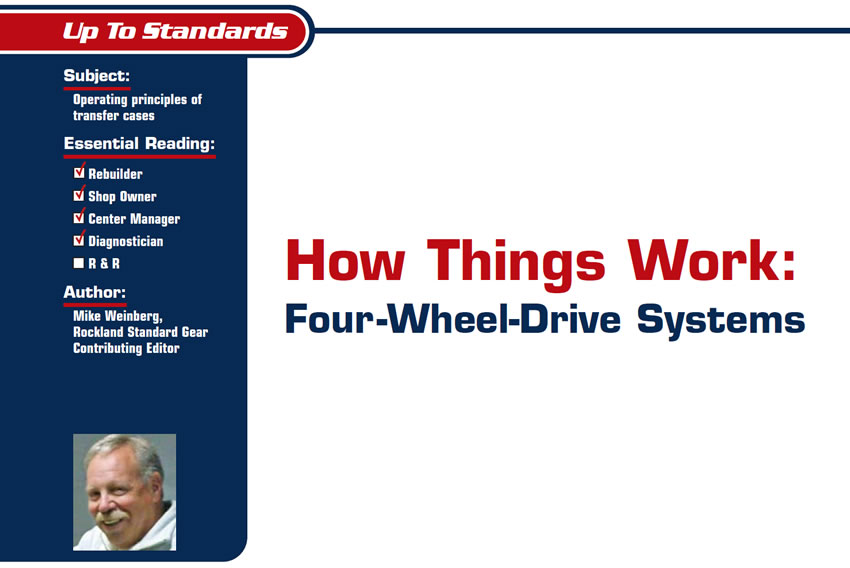
July 2006 Issue
Issue Summary:
After overhaul of a 4T65-E, the vehicle does not move after remaining stationary for a prolonged period.
After transmission exchange or valve-body replacement in a vehicle with a 4T40/45-E, the TCM stores code P1810 for the transmission-fluid pressure-switch assembly immediately after engine start-up.
Certain Dodge/Jeep trucks with 45RFE/545RFE transmissions may exhibit a complaint of a harsh 2-3 upshift accompanied by a clunk or shudder when accelerating, or a harsh 4-5 upshift or 5-4 downshift.
Some 1999 Ford F-Series Super Duty vehicles with the 4R100 transmission and 7.3-liter diesel may exhibit what appears to be a flare-up on either the 2-3 or 3-4 upshift.
